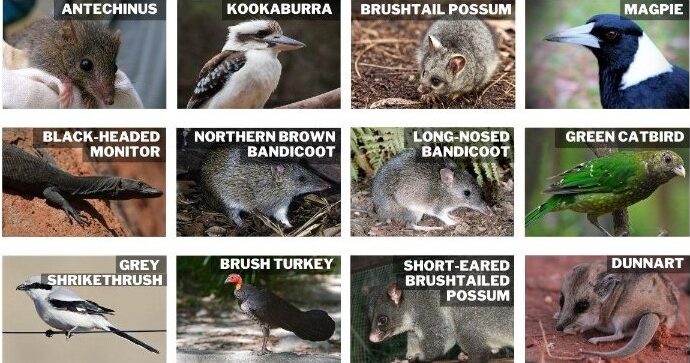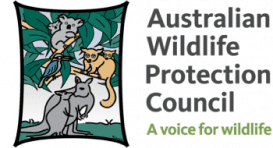
Poison alert and wildlife deaths We resist ‘vertebrate pest management’ in the backyard
Share this page Poison alert and wildlife deaths We resist ‘vertebrate pest management’ in the backyard Love your native birds, possums, kangaroos, lizards? They say ‘think global act local’. A spur to action came recently for my fellow AWPC committee member Joanna Pagan and myself. We witnessed calls for ‘vertebrate pest management’, aka spreading poisons, on rural residential blocks in our neighbourhood at the whim of individual landholders. As AWPC members we are focused on peaceful co-existence with our native animals, and concerned about traditional lethal methods of ‘managing’ the Australian environment and the cruelty involved. We were told the main target in this case was rabbits. Really? a bit like throwing a cluster bomb at an ant hill. The poisons recommended, particularly 1080 but also the anti-coagulant poisons, pose deadly risks for native wildlife in our bush backyards. Those native animals are our neighbours and friends and we want a secure environment for them. Some native animals are directly targeted as ‘pests’ – from dingos in rural Australia to possums and wallabies in Tasmania. But many more marsupials, birds and lizards, (See the main Image) along with pet dogs and cats are unintended victims when landholders and governments bait for rabbits and foxes, wild cats, pigs or goats. The victims eat baits or poisoned carcasses in the food-chain-fatality sequence that characterise these poisons that can go two and three generations. Data shows sheep, cattle and horses have also succumbed to poisoned carrots. We put together a short slide show focusing on the most heinous poison 1080, highlighting research that shows both what is targeted and what is at risk of being collateral damage along with background on 1080, a compound now banned in much of the world because of its toxicity and very cruel action, but used extensively in Australia. Click here for the slide show Animals targeted with poison in Australia This five-minute slide show is a useful educational tool and any reader here is welcome to use it for educating residents and decision-makers if ‘vertebrate pest management’ crops up in your community, or council area. The slide show was possible thanks to the research and education materials put together by Animal Liberation Sydney campaigner Alex Vince and the affiliated Coalition Against 1080 Poison. Alex has added more content to examine and use along with a plea to join forces here: Message from the Coalition Against 1080 Poison 1080 poison represents an animal welfare crisis in Australia, posing a significant threat to our wildlife and ecosystems. This highly toxic substance continues to be widely used in every Australian state and territory, despite being banned in many nations worldwide due to its inhumane and indiscriminate nature. To better understand the scope of this crisis and its impact on Australian wildlife, you can learn more about 1080 by watching this video podcast or visiting the Coalition Against 1080 Poison’s website today. It contains a range of resources, advice for how to tackle 1080 in your state, and ways you can take action today. Together, we can protect Australia’s wildlife by ending this animal welfare crisis. ALSO DEADLY to our wildlife, especially birds. Second-Generation Anticoagulant Rodenticides (SGARs) are decimating birdlife, with an alarming number of tested nocturnal birds containing these deadly poisons. Animal Liberation’s ‘From Harm to Harmony’ campaign aims to ban the use and sale of SGARs in NSW. Take action to break this toxic cycle and create a safer environment for all creatures: www.al.org.au/ban-rat-poisons/#take-action
